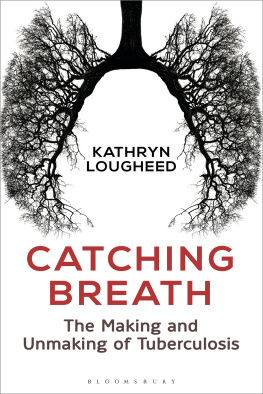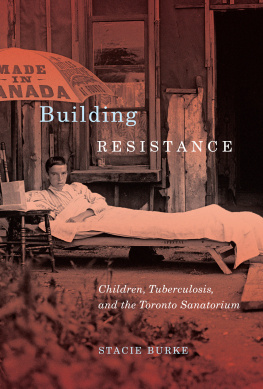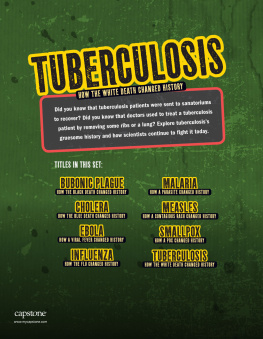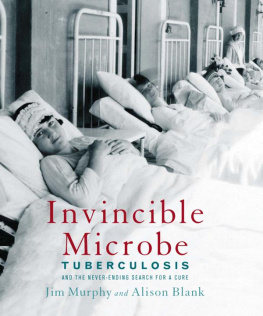
Also available in the Bloomsbury Sigma series:
Sex on Earth by Jules Howard
p53: The Gene that Cracked the Cancer Code by Sue Armstrong
Atoms Under the Floorboards by Chris Woodford
Spirals in Time by Helen Scales
Chilled by Tom Jackson
A is for Arsenic by Kathryn Harkup
Breaking the Chains of Gravity by Amy Shira Teitel
Suspicious Minds by Rob Brotherton
Herding Hemingways Cats by Kat Arney
Electronic Dreams by Tom Lean
Sorting the Beef from the Bull by Richard Evershed and Nicola Temple
Death on Earth by Jules Howard
The Tyrannosaur Chronicles by David Hone
Soccermatics by David Sumpter
Big Data by Timandra Harkness
Goldilocks and the Water Bears by Louisa Preston
Science and the City by Laurie Winkless
Bring Back the King by Helen Pilcher
Furry Logic by Matin Durrani and Liz Kalaugher
Built on Bones by Brenna Hassett
My European Family by Karin Bojs
4th Rock from the Sun by Nicky Jenner
Patient H69 by Vanessa Potter

Contents
More than a decade ago, two scientists sat in a dodgy London pub and decided to write a popular science book on all the ways that bacteria are brilliant. Over the years, they plotted and planned and drank quite a lot of wine in the process, but never actually wrote the book. Today, it feels strange to see my own name in print without Suzie Hingley-Wilsons keeping it company. If it wasnt for her, I would never have discovered that I prefer writing to research, and I certainly couldnt have finished this book without all her suggestions and input. One day, I hope that well finally write our bacteria book but, for now, Suzie will have to make do with this dedication. Theres nothing like writing about your own field of scientific research to make you realise how little you actually know. I am hugely grateful to all the experts who have given up their time to provide me with insight and direction, and the occasional reality check. In no particular order, they are: Koen Andries, William Bishai, Frank Bromacher, Catherine Cosgrove, Anna Coussens, Thomas Dick, David Dowdy, Lukas Fenner, Helen Fletcher, JoAnne Flynn, Sarah Fortune, Andrew Noymer, Onn Min Kon, Kim Lewis, Helen McShane, Nerges Mistry, Alexander Pym, David Sherman, Nicholas Bellantoni, Claudia Denkinger, Julie Archer, Adrian Hill, Robert Wallis, Helen Donoghue, Mark Spigelman, Charlotte Roberts, Bruce Rothschild, Sbastien Gagneux, John Taylor, Cristina Gutierrez, Don Walker, Samantha Sampson, Pere-Joan Cardona, Cris Vilaplana, Dany Beste, Tawanda Gumbo, Alistair Story, Mike Mandelbaum, Leonard Amaral, Joanna Breitstein. An extra-special portion of gratitude goes to my non-TB friends who, despite having no vested interest in furthering the TB cause, agreed to provide me with feedback. I dont know why you did it, Hellen Thomson, Nick Brereton, Austin Guest, Volker Behrends and Timothy Simpson, but Im super-grateful all the same. There are so many more people who I would have loved to talk to and whose published work has played a huge part in filling these pages. Unfortunately, I think that the lovely people at Bloomsbury would have lost their patience with me had I dragged out my deadline by the additional decade it would have taken to speak to you all. I am sure that working with me tested their patience as it was, so special thanks (and blanket apology) must go to Jim Martin and Anna MacDiarmid. Also, thank you to Myriam Birch for her editing and knack of spotting sentences that simply made no sense, and to all the other people whove played a role in making this book a reality. Years ago, I helped a friend finish his PhD thesis with hours to spare before the deadline. In his acknowledgements, he thanked me for my meticulous proof-reading. Unfortunately, the thesis was riddled with spelling mistakes and one of his viva examiners - my ex-boss - was quick to point out this backhanded compliment. So I hesitate to thank Roger Buxton for his mentorship and for inspiring me to find the fascinating story behind the research, but what the hell, thanks. And thanks to Huw Williams for employing me not once but twice, and for providing the backdrop to where I found my love for latent TB and writing, and where I made many of the friends who have helped me with this book. My last batch of thanks goes to my parents for encouraging my first writing endeavours, even if they were about a man who gave birth to an entire football team of sons; my sister Rebecca for being my first reader and the person whose opinion I will always value over everyone elses; and most importantly Phill, for being the only person to believe in this book without needing to actually read it.
This is the story of one of the worlds oldest diseases. Tuberculosis was a spectator at the birth of Homo sapiens and a passenger as these early humans took their first tentative steps outside the Cradle of Life to populate the planet. It was present as the first villagers threw down roots and it has witnessed entire civilisations decay into the ground. It marched with Roman armies and sailed the seven seas; walked with long-extinct mastodons and swirled in the wake of war and disaster. Sometimes a disease of poets and passion, more often a mass killer responsible for death on an unimaginable scale, tuberculosis has twisted through history alongside humankind, shaping populations and searing a trail through our folklore, art, literature and music. So its perhaps a little surprisingly that I would start this book with a pet cat from Berkshire.
Poor Onyx, RIP, holds the dubious honour of being responsible for the first documented case of cat-to-human transmission of tuberculosis, or TB, after infecting his 19-year-old owner. Based on some of the news reports, youd be forgiven for thinking Onyx was the black-cat harbinger of doom, foretelling the end of the world as we know it. Could you catch TB from YOUR tabby? cries one headline in the UKs Daily Mail . Thats right. Not just any cat, but YOUR cat. The beloved family member whos bonded with you through discarded mouse spleens and hair-caked bedsheets. Stop the press: Death personified (felinified?) has infiltrated close to 20 per cent of UK homes and right now hes coughing up a TB-infected hairball on your sofa. Should we be scared? Well, yes, damn right we should. That Daily Mail headline is truly awful.
Onyx was one of nine cats found to be infected with TB, at least five of whom died. One newspaper even published the names and photos of three of the victims Onyx, Jasper and Mocha. Im not sure it added much to the story but they were certainly very pretty cats. Its possible that they picked up their TB infections as the result of a run-in with a straycat who had taken on an infected badger (I have to admire its ambition). The Express felt it was necessary to explain that all the fighting and biting took place in or around Greenham Common, a location previously known for being the site of a radical feminist antinuclear protest. I keep trying to work out the relevance of this piece of information. As far as I know, TB is not an inevitable consequence of pacifism or assertiveness on the part of the female gender. Perhaps the newspaper was trying to ramp up the doomsday atmosphere of the story. Killer cats and feminists? Watch out, they could be coming to YOUR town.
The cats didnt actually kill anyone. They took their TB-laden open wounds back home and potentially exposed 39 of their human slaves. Two were to contract active TB, another two were asymptomatically infected. Everyone survived. So, not quite death on a nuclear-feminist scale. After a brief burst of media hype that lasted just days, everyone moved on to the next crisis to afflict Great Britain, and the cats were forgotten. But not by me. I keep looking at that photo of long-haired Mocha, with those alluring blue eyes that stare at something just out of shot. And I keep thinking, Is this the face of modern TB? Has this mighty killer fallen so far that its become tabloid scaremongering fodder that no one really takes all that seriously? When it comes to stories like this, part of me is pleased that people are talking about TB. Another part of me thinks that TB would no longer still be a problem if the actual humans who are dying evoked as much sympathy as a fluffy kitten. Most of me thinks that I have become rather cynical after 10 years in the TB research field.












